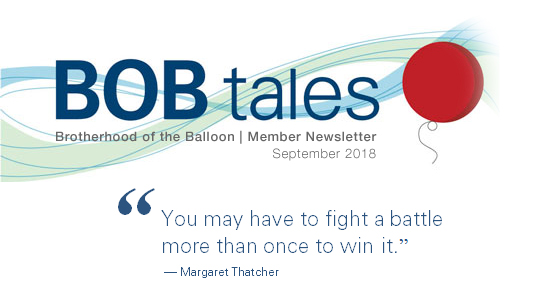
Dear Members:
One of the greatest frustrations I have experienced in the 18 years since learning about proton therapy for prostate cancer treatment, has been the growing resistance by private insurers to cover this superior technology. Sadly, it’s all about the money. Proton therapy costs more because the technology requires sophisticated particle accelerators, complex infrastructure, and a highly educated and trained support staff to generate and manage proton particle delivery.
Emerging technologies always cost more initially. But, over time costs come down, often to levels comparable to existing technologies. And new technological developments are moving us in that direction.
Clinical studies have yet to be completed comparing proton therapy to conventional x-ray technology. So, while Medicare typically covers proton therapy, private insurers are using the lack of such studies as justification for refusing reimbursement.
At the same time, one thing doctors, physicists, and scientists all agree on is this: The only safe radiation dose to healthy tissue is a zero dose. And, considering all available radiotherapy options, proton therapy comes very close to that goal.
The good news is that a number of proton/photon clinical trials are under way involving cancers of the breast, lung, prostate, esophagus, liver, and brain.
As we have mentioned in previous BOB Tales, a new clinical study has been initiated to compare proton therapy to IMRT for treating prostate cancer. The study is being led by Dr. Nancy Mendenhall, Medical Director at University of Florida Health Proton Therapy Institute. Most proton therapy centers in the U.S. are participating as well as several IMRT centers. Deb Hickey and I are stakeholders on the study. Deb serves as a patient caregiver, and I’m serving on the executive board as well as on the patient stakeholder group.
Dr. Mendenhall has assembled an impressive team of physicians, scientists, statisticians, advisers and patients, and is vigorously driving this study toward a set of ambitious goals with an aggressive timetable.
The study, funded by PCORI (Patient Centered Outcome Research Institute), is called the COMPPARE, trial. The double Ps represent the collaborative effort by proton and photon practitioners, patients, stakeholders, and PCORI to answer the important question of whether there are meaningful result differences between protons and photons for men with prostate cancer..
This multi-year study will involve 3,000 patients and will monitor disease control as well as several quality-of-life results. From our perspective, the COMPPARE project is the most important thing happening in the proton world. Stay tuned!
Learn more about the COMPPARE trial.
In this month’s issue, learn more about the other clinical trials under way and the organization fighting to hold insurance companies accountable for providing patients with fair and timely access to proton therapy. We also provide yet another story on the importance of getting second opinions and why one man fired his urologist after sending his slides to another pathologist. Also, learn why you shouldn’t wait until your prime time TV shows to begin to eat your dinner—unless you’re a night owl. More topics covered in this month’s issue are directly below.
As always, we love to hear from our members—please send us your feedback.
Bob Marckini
To print the BOB Tales newsletter or view the newsletter with a larger font size, click here for the PDF file.
In this Issue:
- Proton Therapy Clinical Trials at Risk
- Once Again Second Opinion Pays Off
- Early Supper May Lower Risk of Cancer
- Impotence More Common After Prostatectomy than Previously Thought
- Member Feedback—Wow!
- Proton Therapy and Hip Replacement
- The Benefits of Juicing
- On a Low-Salt Diet? Be careful.

Proton Therapy Clinical Trials at Risk
The controversial question—Is proton therapy better than conventional radiation?
Researchers are attempting to answer this question and put the debate to rest through randomized clinical trials. Seven are under way, covering cancers of the breast, lung, prostate, esophagus, liver, and brain.
A report, recently published in the Journal of Clinical Oncology, states the trials are essential to compare the efficacy and toxicity of proton therapy to conventional radiotherapy. Because proton has not been proven superior and is more expensive, commercial insurers and state Medicaid plans don’t cover it for the indications under study.
Is there a solution?
The National Cancer Institute and Patient-Centered Outcomes Research Institute have made investments to fund all seven trials; however that doesn’t include payment for patients’ treatment. To address this issue, some have suggested stakeholders come together to establish insurance coverage with a trial participation program that provides patients access to proton therapy through randomized trials designed to assess its benefits and harms. Others suggest engaging patients more deeply so they feel compelled to enroll.
Fighting the Good Fight
One organization fighting to hold insurers accountable for providing “fair, timely, and transparent access to cancer treatment” is the Alliance for Proton Therapy Access. The organization has issued a report, “Cancer Care Denied: The Broken State of Patient Access to Proton Therapy,” which includes patient stories and data detailing the “heavy emotional and financial burden cancer patients endure trying to get their insurer’s approval for physician-recommended proton radiation therapy.” The campaign aims to shift the balance of power giving physicians and patients more of a voice in regard to treatment options.
The Alliance is asking commissioners in every state to adopt and enforce principles of a “Cancer Patients’ Timely Treatment Bill of Rights.” Their message? Cancer patients and their doctors should be fighting cancer, not insurance companies.
How can you help? Sign the petition.
Once Again Second Opinion Pays Off
Several times a week we receive inquiries from newly diagnosed men or from members of their families. They have heard about the BOB from friends, found us on the Internet, or learned about us from Bob Marckini’s book. The emails or phone calls all have a similar theme. “My name is ‘Bill Jones’ and I’ve been diagnosed with prostate cancer. My PSA is xx and my Gleason score is xx. I heard about proton therapy and was wondering if it’s something I should consider …”
We first remind those who contact us that we aren’t medical professionals and can’t give medical advice, only our opinion. And long before we go into details about the benefits of proton therapy we ask the caller if he has gotten a second opinion on his biopsy slides. In 99 percent of the cases the caller says, “No.”
We often encourage them to get a second opinion and suggest they consider one of the premier pathology labs, some of which are listed in the appendix of Bob’s book. One that a number of BOB members have used is Dr. Jonathan Epstein’s lab at Johns Hopkins.
Not surprising, when we hear back from the individual later, we often learn that Dr. Epstein’s evaluation is different from the original pathology report.
The significance and importance of this new information can’t be overstated. If the cancer is more aggressive than originally thought, then the treatment that was being considered may not have been intensive enough to destroy all the cancer. And, if the finding by a premier pathology lab is that the cancer is less aggressive than originally thought, then a less-intense treatment or, active surveillance, might be in the patient’s best interest.
We have written in the BOB Tales before about two cases where Dr. Epstein told patients that he saw no cancer at all in the slides he reviewed. While cases like this are rare, it isn’t rare for Dr. Epstein to change the Gleason staging of the patient.
Last month we heard from a gentleman who we encouraged to get a second opinion.
First of all, I want to extend much thanks to you for referring me to Dr. Jonathan Epstein. I did so and as a result, my Gleason score was reduced from 3+4=7 to 3+3=6 and my core volume reduced from 15 percent to 5 percent. Per NCCN, using his information, I would be considered in the “very low risk” category with ALL of the following criteria being met:
- T1c non-palpable: Yes
- PSA < 10 ng/mL - yes, latest test reduced from 4.5 to 3.3
- PSA density < 0.15 - yes, mine .09 per MRI
- Gleason score ≤ 6 - mine now 3+3=6, reduced from 3+4= 7
- Cores with cancer ≤2 - mine 1
- Less than 50% in core: Yes, mine reduced from 15% to 5%
According to NCCN, people in the “very low risk” category, with life expectancy less than 20 years, active surveillance is a very good option. This is what I plan to do after I fire my urologist. To the very end, he refused to send the slides for a second opinion; he told me if I want it that I should do so myself.
Lessons learned:
- Getting a second opinion on almost any medical diagnosis is a wise thing to do. There’s no risk, and much to gain if there’s is a difference of opinion.
- Any doctor who objects to getting a second opinion shouldn’t be your doctor.
This gentleman is doing active surveillance and confident he made the right choice.
Early Supper May Lower Risk of Cancer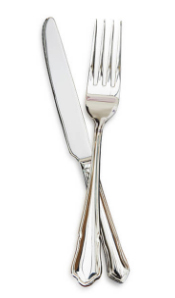
A new study says people who eat dinner early or wait at least two hours before going to bed have a 20 percent lower risk for breast and prostate
cancer compared to people who eat after 10 p.m. or those who eat and go to bed shortly afterward.
The study included data from more than 1,800 cases of breast and prostate cancer, as well as more than 2,000 controls selected randomly from primary health centers. Participants were interviewed about meal timing, sleep habits, chronotype (whether they’re a “morning person” or an “evening person”), and completed a questionnaire on eating habits and adherence to cancer prevention recommendations.
There have been numerous studies on the link between food and cancer; however they’ve focused primarily on dietary patterns—for example, the effects of eating red meat, fruit and vegetables and the associations between food intake and obesity. Until now, little attention has been paid to the everyday act of eating—the timing of food intake and the activities people do before and after meals. This study, by the Barcelona Institute for Global Health, is the first to analyze the association between cancer risk and the timing of meals and sleep.

We’ve been producing BOB Tales newsletters monthly for nearly 18 years. During this time there have been important articles that many new members haven’t seen, and some long-time members may have forgotten. So, we decided to periodically re-run articles from past newsletters. The following is from August 2004.
Impotence More Common After Prostatectomy than Previously Thought
A member sent us a reference to this article from the British Medical Journal. In the reported study, researchers followed 1,291 men age 39-79 who were randomly sampled from six National Cancer Institute cancer registries across the U.S. They found that 60 percent of the men were impotent 18 months after the surgery, 8 percent experienced total urinary incontinence, and 40 percent had occasional genitourinary problems (JAMA 2000;283:354-60). Of the men who received the non-nerve-sparing procedure, 66 percent or two thirds, said they were impotent after the surgery, compared to 56 percent of the men who had a bilateral nerve-sparing procedure. Of the men undergoing a unilateral nerve sparing procedure, 59 percent said that they became impotent.
Keep in mind that those who undergo radical prostatectomy are generally the younger, healthier males. These are the ones you would expect would have the highest probability of maintaining sexual potency.

Member Feedback—Wow!
We were inundated with feedback from our members after last month’s BOB Tales. Here are just a few examples of the dozens of messages we received:
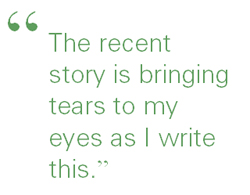 Thank you for all you do. The recent story is bringing tears to my eyes as I write this. I am two years post -proton and three months post-ADT. Test results are good. Thanks to your efforts in helping me.
Thank you for all you do. The recent story is bringing tears to my eyes as I write this. I am two years post -proton and three months post-ADT. Test results are good. Thanks to your efforts in helping me.
Deb, you gave us a very interesting lead story. My own search for proton beam could hardly have been any easier. The doc gave my wife and me the diagnosis and our options with his group. I called the kids and told them. One called back immediately, asking if she could share this with her father-in-law. Sure. He called shortly. He’s a big supporter of Loma Linda. I talked also with Bob Marckini. Then I made the appointment to visit Loma Linda. Thanks be to God and to all those who made it possible.
I read EVERY word of the newsletter, especially anything you write because it comes straight from your beautiful heart!
Thanks for all you do in publishing the newletter. Certainly, your father was led in this effort through the PC sufferings in his own family and the gratitude for an extended life of his own. His description in his book of entering Loma Linda and seeing the cross atop the building leading him greatly influenced my decision to research proton therapy which I completed in 2009.
Thank you for many years of selfless service to us members. You and your father are a superb duo!
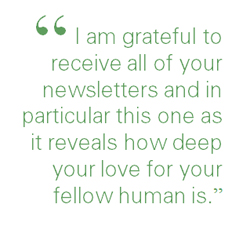 I graduated from proton treatment at MDA in 2016. I underwent the hypofractionated trial, which increased the per-treatment dose and reduced the number of treatments down from 40 plus sessions to a total of 15 for five weeks. As of now, all QOL issues are 100 percent as before treatment … I am grateful to receive all of your newsletters and in particular this one as it reveals how deep your love for your fellow human is.
I graduated from proton treatment at MDA in 2016. I underwent the hypofractionated trial, which increased the per-treatment dose and reduced the number of treatments down from 40 plus sessions to a total of 15 for five weeks. As of now, all QOL issues are 100 percent as before treatment … I am grateful to receive all of your newsletters and in particular this one as it reveals how deep your love for your fellow human is.
Thanks for the recent article and all the effort you put forth in spreading the good news of proton therapy. You are so instrumental in the success of this newsletter and making the world a better place for everyone in their journey. We are blessed to have your father and you available to us to give those diagnosed with PC hope for their future.
Thank you for all you do. You and your father have changed many lives for the better … I was diagnosed with prostate cancer in 2010 and went through proton therapy successfully … Proton therapy enabled me to avoid any downtime and care for my wife. She has multiple sclerosis and I am her caregiver. The ability to carry on with our lives and, in my case, provide care for my wife is an attribute that never makes its way into medical studies.
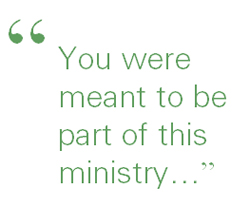 Deb: I read your opening letter and stopped to write this to you. You were meant to be part of this ministry, as have I, and many others. Thanks for all the help you’ve been to those I’ve referred over the years and to Kate especially. I doubt many others know your time and dedication to this ministry, I don’t know the extent of all you do, and the hours you spend, but know it’s lots. Know this—you have made a difference in probably thousands of lives. Someday God will tell you, “Well done.” Until then, I’ll say it—
Deb: I read your opening letter and stopped to write this to you. You were meant to be part of this ministry, as have I, and many others. Thanks for all the help you’ve been to those I’ve referred over the years and to Kate especially. I doubt many others know your time and dedication to this ministry, I don’t know the extent of all you do, and the hours you spend, but know it’s lots. Know this—you have made a difference in probably thousands of lives. Someday God will tell you, “Well done.” Until then, I’ll say it—
Well done, Deb … And the same goes for Bob!
Your July newsletter is amazing. The intro was so well written. I can’t thank you enough for your thoughtfulness. Also, the articles you included were so varied and relevant to all of us. I can’t wait for the next time someone asks me about my prostate cancer treatment experience to refer them to the BOB as I always do.
Your work is very much appreciated!
Note from Deb: This is just a small sampling. I don’t think I’ve ever received so many kind messages following a newsletter. I’m touched by this feedback and grateful for all the emails.
Proton Therapy and Hip Replacement
We often hear from newly diagnosed men who have had single or bilateral hip replacements who have been told by their urologist they aren’t candidates for radiotherapy. We tell them that is not entirely true. Because the proton beam is so highly focused, it can be used to treat men with single or bilateral hip replacements. The procedure is more complicated than the standard treatment procedure where the beam is directed to the prostate through the hips. For that reason, not all proton centers treat men with hip replacements.
Loma Linda University Cancer Center has been treating men with single or bilateral hip replacements for many years. Some of our members with hip replacements who were treated at LLUCC have volunteered to speak with others who have hip replacements and are considering proton therapy treatment for their prostate cancer. Several years ago, we developed a patient reference list that includes these members’ contact information. We’d like to expand on this list and also include some men with hip replacements who were treated recently. If you have had a hip replacement, have been treated with proton therapy, and are willing to share your experience with prospective proton patients with hip replacements, please let us know.

Conversations with Contributors
As we’ve mentioned in the past, we receive a monthly report of members who have made contributions to the Robert Marckini Chair for Proton Therapy Research or Loma Linda University Health’s Vision 2020 campaign, though we don’t know the exact amounts given. Bob and Deb make every attempt to get in touch with everyone on these lists to thank them for their generosity. We also sometimes ask why they chose to make a donation. Following are a few quotes from our conversations:
I give back because I’m able to do so—and I’ll do anything for the cause. I feel I’ve been given a second chance at life—one without complications that I may have had if I’d gone with another treatment option. Proton therapy saved me and I’d like to help others have access to this incredible treatment.
For me, proton therapy was an easy decision after I compared all the options. And I’m not only thankful for my treatment, but all the follow-up through the BOB. I use the newsletter to convince others to get proton therapy. It is my wife’s and my pleasure to support Loma Linda’s proton program for as long as we can.
I give willingly to Loma Linda because of all that Loma Linda has given me. I am 14 years post treatment; my PSA is holding and my quality of life is excellent. I have even prepared my own slide show on proton therapy for prostate cancer and use it to promote proton therapy in my community.
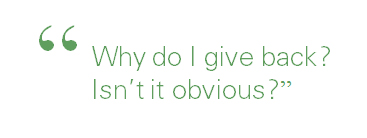 I’m a hiker, a cross-country skier, and a cyclist. I’ve also jumped out of a few planes. I’m also a dad, a husband, and a grandfather. Why do I give back? Isn’t it obvious?!
I’m a hiker, a cross-country skier, and a cyclist. I’ve also jumped out of a few planes. I’m also a dad, a husband, and a grandfather. Why do I give back? Isn’t it obvious?!
How to Give to Proton Therapy Research
- Donate Online: Visit the LLUCC website.
- Send a Check: Make it out to “LLUCC Proton” with “Marckini Chair” on the memo line and send to: LLUH, Office of Philanthropy, P.O. Box 2000, Loma Linda, CA 92354.
- Make a Call: Contact Elvia DeHaro at 909-558-501
How to Give to Vision 2020
- Donate online: Visit the LLUH website.
- Send a check: Make it out to: “LLUH Vision 2020.” Mail to: LLUH, Office of Philanthropy, P.O. Box 2000, Loma Linda, CA 92354.
- Make a call: Call 909-651-2020.
How to Make a Future Gift
- Make a future gift: Contact Todd Mekelburg at the Office of Planned Giving at Loma Linda University Health at 909-558-5376 or [email protected].
- Other ways to give: Contact Matt Miller at the Office of Philanthropy at Loma Linda University Health at 909-558-3582 or [email protected].

NAPT Conference 2019
The National Association for Proton Therapy (NAPT) is the voice of the proton community. The organization provides education and awareness for the public, professional, and governmental communities. Join the National Association for Proton Therapy for the 2019 National Proton Conference March 24 - 27, 2019, at The Biltmore Miami-Coral Gables in Coral Gables, FL. Attendees will include physicians, nurses, therapists, patients, proton therapy directors and managers. Learn more.


The Benefits of Juicing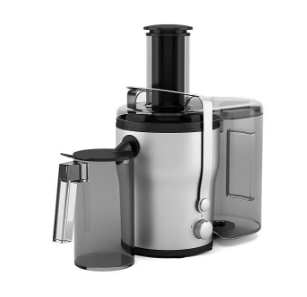
According to Mayo Clinic, juicing fresh fruits and vegetables can be a good way to add important nutrients to your diet. This is especially valuable to those who have difficulty eating the recommended five to nine servings of fruits and veggies each day.
Juicing shouldn’t be the only way to consume these nutrients, because healthful fiber from skin and pulp, which his lost during juicing, can aid in digestion, improve cholesterol levels and lower heart disease risk.
Juicing shouldn’t be made mostly from fruits high in carbohydrates and sugars. It could be a significant source of calories, and without the fiber, you won’t feel full and are likely to be hungry sooner and risk weight gain.
Mayo Clinic warns that you should limit added sugars from honey, syrup or other sweeteners. And they strongly recommend blending, or consuming smoothies that usually contain the healthful fibers from skin and pulp.
On a Low-Salt Diet? Be Careful.
A recent study published in the American Journal of Hypertension identified significant risks to cardiovascular health and longevity from consuming fewer than one or more than three teaspoons of salt per day. Low-salt diets can also cause seniors to suffer from mild hyponatremia, an electrolyte imbalance in the blood.
.jpg) Hand Washing: Does Temperature Matter?
Hand Washing: Does Temperature Matter?
Researchers at Rutgers University published an article on this subject in the Journal of Food Protection. They concluded that cool water is just as good as warmer water to get rid of bacteria. Also, a single pump of foam soap is just as effective as four pumps when washing hands.
Additionally, 20 seconds of washing hands followed by a rinse is all that’s needed to clean hands. Additional washing provides no benefits.
And finally, antibacterial soap is no better at removing bacteria than plain soap.
Series: “Make Vegetables Taste Good”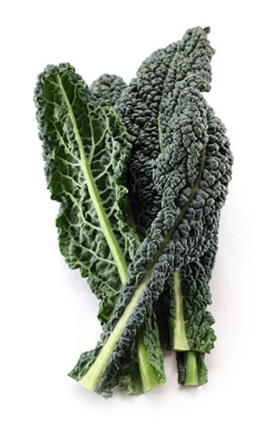
This is the 22nd segment on a subject that’s consistent with our Anticancer series. We made it our mission to find recipes that make vegetables and other healthful foods taste delicious. And, we’ve tried them all!
Note: Do you find this series valuable? Have you tried the recipes? Do you wish for us to continue with this series? We’d love to know—please write to us!
Kale is a favorite in Deb Hickey’s home and she’s constantly looking for new recipes. The following dish is finished with Thai flavors like lime, cilantro and sriracha. For best results, cook the rice in advance and refrigerate until you’re ready to cook.
Spicy Kale and Coconut Stir Fry
Ingredients (Serves 2):
- 2 tablespoons coconut oil
- 2 eggs (or egg whites), beaten with a dash of salt
- 2 big garlic cloves, pressed or minced
- ¾ cup chopped green onions (about ½ bunch)
- Optional: 1 cup thinly sliced vegetables, like bell pepper, carrots, or Brussels sprouts
- 1 medium bunch kale (preferably Lacinato but curly green is good, too), ribs removed and leaves finely shredded
- ¼ teaspoon fine grain sea salt
- ¾ cup large, unsweetened coconut flakes (not shredded coconut)
- 2 cups cooked and chilled brown rice
- 2 teaspoons reduced-sodium tamari or soy sauce
- 2 teaspoons chili garlic sauce or sriracha
- 1 lime, halved
- Handful fresh cilantro, for garnish
Directions:
Heat a large (12-inch or wider) wok, cast iron skillet or non-stick frying pan over medium-high heat. Once the pan is hot enough that a drop of water sizzles on contact, add 1 teaspoon oil. Pour in the eggs and cook, stirring occasionally, until the eggs are scrambled and lightly set. Transfer the eggs to your empty bowl. Wipe out the pan if necessary with a paper towel.
Add 1 tablespoon oil to the pan and add garlic, green onions, and optional additional vegetables. Cook until fragrant or until the vegetables are tender, stirring frequently, for 30 seconds or longer. Add kale and salt. Continue to cook until the kale is wilted and tender, stirring frequently, about 2 minutes. Transfer the contents of the pan to your bowl of eggs.
Add the remaining 2 teaspoons oil to the pan. Pour in the coconut flakes and cook, stirring frequently, until the flakes are lightly golden. Add the rice to the pan and cook, stirring occasionally, until the rice is hot, about 3 minutes.
Pour the contents of the bowl back into the pan. Add the tamari, chili garlic sauce, and juice of ½ lime. Stir to combine and set aside.
Slice the remaining ½ lime into wedges; then divide the stir-fry into individual bowls. Garnish with wedges of lime and a sprinkling of torn cilantro leaves.

Was it something we said?
Thirteen 5-star Amazon reviews were submitted last month! Was it something we said? We want to thank Mark, Rawley, Gregory, Perkybuns (had to laugh at this username), Tray, Clintland, Virginia, Beth, DAK, Retired Educator, JCStark5, Renato, and Larry for your thoughtful reviews. We read and appreciate every single one. Your reviews help Bob Marckini’s book stay visible to the thousands of users who are looking for information on prostate cancer treatment options on Amazon.
Back to No. 3!
Most likely, as a result of the 13 new reviews, Bob’s book has moved back into the No. 3 position on a query for “prostate cancer!” As we’ve said before, the number of positive reviews matters greatly—reviews serve as digital focus groups—the more positive reviews, the more likely a user will purchase a product.
Please take a minute!
Many medical professionals aren’t informed about proton therapy and most mainstream media (and some doctors) discount proton therapy as a viable treatment option. We’re fighting daily for this to change. One way is through Bob’s book. Please help others find it! Just post a review and rate it from one to five stars. Click on the gray “Write a Review” button. It takes only a minute!
Excerpts from Recent Reviews

Read Bob Marckini’s book before you decide on treatment.
… After a year of looking at every option and reading Bob Marckini’s book, I decided on Loma Linda proton therapy … Bob’s book and Loma Linda saved my life … —Larry

I felt an obligation to recommend this masterpiece …
I read Robert Marckini’s book so many times and I felt an obligation to recommend this masterpiece to anybody who suffered from prostate cancer … I’m still reading it … —Renato

I use it to tell others there is an option they may have not heard of …
… This book helped me tremendously in making my treatment decision. I checked the book often before, during, and after my treatment, and now I use it to tell others there is an option they may not have heard about that can have a very happy and healthy ending. —JCStark5

Don’t make a treatment decision without reading this book.
... One thing that was making me fearful was the overwhelming consideration that perhaps “the cure was going to be as bad as the disease …” Why had not anyone in the medical establishment even suggested [proton therapy] as a treatment option? … It’s been more than six years and I am still thankful for finding this book ... —DAK
Bonus: Following are five genius products on Amazon people can’t get enough of …
You can find anything on Amazon. Take a look at some products you didn’t know existed, but may not be able to live without …
- Portable Washing Machine: Have an RV? Live in an apartment and hate the laundromat? This product is for you.
- Cable Concealer: Is your flat-screen TV mounted to a wall in your house? In lots of cases, that means you’re stuck with ugly wires. This product solves that!
- Body Fat Scale: Track your body fat, water mass, muscle mass, BMI, BMR, bone mass, and more. Plus, the scale allows an unlimited number of users, so one works for the entire family.
- Dog Camera: This amazing product streams footage of your home to an app, allowing you to see what your dog is up to while you’re away. It sends notifications when he’s barking, and allows you to speak to him and toss him treats!
- Avocado Slicer: Deb Hickey eats avocados every day—and she still hasn’t figured out how to keep them neat. This product will cut, remove the pit, and slice!
You’re welcome.
Buy Online, in Bulk or in Spanish
Online: Paperback: $19.00--•--Kindle: $7.99--•--NOOK Book: $9.99--•--Apple iBook: $9.99
In Bulk: Conctact us for a discount price list. Proceeds from book sales support proton therapy research through the Robert J. Marckini Endowed Chair at LLUCC.
In Spanish: Buy the print version or in eBook format.
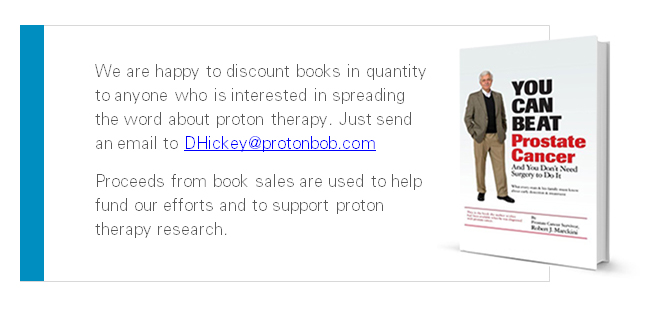

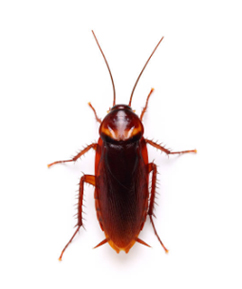 Cockroach Milk Anyone?
Cockroach Milk Anyone?
Just when you thought roaches were only good for squishing and spraying: They apparently excrete a drinkable substance. And, believe it or not, some are considering it a potential super food. This story was reported in Science Alert.
In many cultures around the world, insects are considered a delicacy. Scientists studying one cockroach species in 2016 determined that crystallized milk particles from milk that adults produced and fed to their babies are a “complete food” containing proteins, fats, sugars, and all the essential amino acids. And it provides three times the energy of cow’s milk.
Scientists from the Institute of Stem Cell Biology and Regenerative Medicine are attempting to sequence the genes responsible for producing the milk protein crystals to see if they can replicate them in the lab.
Roach milk isn’t expected to show up in grocery stores anytime soon, but you can bet it’ll be happening someday. Bet you can’t wait!
The World’s Happiest Country
Using measures of income, life expectancy, freedom, social support, trust, and generosity, Finland comes out on top, followed by Norway, Denmark, and Iceland. This was posted in USA Today, which was quoting from the World Happiness Report.
Other countries with high rankings were Switzerland, the Netherlands, Canada, New Zealand, and Sweden. The U.S. ranked 18th on the list.
I Didn’t Know That!
Alaska: More than half of the coastline of the entire U.S. is in Alaska.
The Amazing Amazon: The Amazon rain forest produces more than 20 percent of the world’s oxygen supply. The Amazon River pushes so much water into the Atlantic Ocean that more than 100 miles at sea off the mouth of the river, one can dip fresh water out of the ocean The volume of water in the Amazon river is greater than the next eight largest rivers in the world combined and three times the flow of all rivers in the U.S.
Antarctica: Antarctica is the only land on our planet that isn’t owned by any country. Ninety percent of the world’s ice covers Antarctica. This ice also represents 70 percent of all the fresh water in the world. As strange as it sounds, however, Antarctica is essentially a desert; the average yearly total precipitation is about two inches. Although covered with ice (all but 0.4 percent if of ice), Antarctica is the driest place on the planet, with an absolute humidity lower than the Gobi desert.
Brazil: Brazil got its name from the nut, not the other way around.
Canada: Canada has more lakes than the rest of the world combined. Canada is an Indian word meaning “Big Village.”
Chicago: Next to Warsaw, Chicago has the largest Polish population in the world.
Detroit: Woodward Avenue in Detroit, MI carries the designation M-1, so named because it was the first paved road anywhere.
Five Strange Facts about Beards
We’re sure many of our members have beards. Here’s why you should be proud of your fuzz—and why some of you may want to grow facial hair.
- Clean-shaven men, compared to bearded men, are three times more likely to carry harmful bacteria on their face.
- Historically, beards have been regarded as a symbol of knowledge and wisdom (Shakespeare, Socrates, Galileo …).
- If you have pollen or dust allergies, grow a beard. It will help you—it’s been medically proven.
- In the middle ages, it was considered offensive to touch another man’s beard. The consequence? A duel.
- When the Romans were ruling, beards used to be taxed—you had to have a license to sport a beard.
Here are more reasons to grow a beard.
How far can you see?
From Parade Magazine
If you stood on a beach facing the horizon, how far could you see?
- Under 10 miles
- 10 to 100 miles
- 100 to 1,000 miles
- Over 1,000 miles
Find the answer later in this newsletter.
Estate Planning Hints Words of Wisdom Series
BOB member Ron Hendricks is Director of Gift Planning for Trinity Western University. He regularly copies us on his “News from Ron” mailings, which are helpful hints on estate planning to the readers of his newsletters. We have found Ron’s suggestions to be timely and beneficial. With his permission we periodically share some of his wisdom with our membership. This segment is called …
Significance
We all desire significance—to lead happy and fulfilled lives surrounded by family and friends. For many of us, there’s a compelling need to make a difference that leads us to ponder our legacy. What kind of legacy will you leave? A gift from your estate is perhaps the easiest and most tangible way to leave a lasting impact on the people and organizations that mean the most to you. A bequest is one of the easiest gifts to make. With the help of an adviser, you can include language in your will or trust specifying a gift to be made to family, friends or charity as part of your estate plan.
An estate gift may be made in several ways:
- Gift of a dollar amount
- Gift of a percentage of your estate
- Gift of a specific asset
- Gift of the remainder of your estate
One benefit of a charitable gift is that it enables you to further the work of God’s kingdom long after you’re gone. A charitable gift can also help you save estate taxes by providing your estate with a charitable deduction for the value of the gift. With careful planning, your family can avoid paying income taxes on the assets they receive from your estate. Because of the taxable nature of retirement funds they are often the best gift to your charities but may be the worst gift to your children. This type of gift is most often done through a beneficiary designation.

Last Month’s Brain Teaser
Two U.S. coins are worth 30 cents and one is not a quarter. What are the two coins?
Answer: A quarter and a nickel. Note: The nickel is not a quarter.
Winner: This was one of our easier brain teasers—we received dozens of correct answers! The winner is Harry Phillips of Tacoma, WA (He also has a home in Chandler, AZ). Harry was treated with proton therapy at LLUCC in 2007; he has been a BOB member for nearly 11 years.
Retired from a position as a partner at Moss Adams, LLP, CPAs in Seattle, Harry spends his time working as an adjunct professor in the Morken School of Business at Pacific Lutheran University in Tacoma. He also serves as board treasurer of a government contractor that provides employment opportunities for wounded warriors and others with disabilities in 11 states and D.C.
Harry enjoys golf and traveling. He tells us he’s had “no health issues” since completing his proton treatment and has several friends who have elected to have proton therapy. “None of us have looked back about the good decision we’ve made,” Harry says.
New Brain Teaser
This will get you thinking…
In 1990, a person is 15 years old. In 1995, that same person is 10 years old. How can this be?
Send your answer to [email protected] for a chance to win a signed copy of Bob Marckini’s book, You Can Beat Prostate Cancer.
Fitting Memorial? (Source)
Joe passed away. His will provided $30,000 for an elaborate funeral.
As the last guests departed the affair, his wife, Helen, turned to her oldest friend. “Well, I’m sure Joe would be pleased,” she said.
“I’m sure you’re right,” replied Jody, who lowered her voice and leaned in close. “How much did this really cost?”
“All of it…” whispered Helen. “Thirty thousand.”
“No!” Jody exclaimed. “I mean, it was very nice, but $30,000?”
Helen answered, “The funeral was $6,500. I donated $500 to the church. The wake and reception were another $500. The rest went for the memorial stone.”
Jody computed quickly. “$22,500 for a memorial stone? My goodness how big is it?”
“Two and a half carats.”
Golf in Heaven? (Source)
Two old men had been friends most of their lives. When it was clear that Frank was dying, Leonard visited him every day.
One day Leonard said, “Frank, we both loved playing golf all our lives, and we started playing in high school. Please do me one favor: When you get to heaven, somehow you must let me know if there’s golf there.”
Frank looked up at Leonard from his deathbed and said, “Leonard, you’ve been my best friend for many years. If it’s at all possible, I’ll do this favor for you.”
Shortly after that, Frank died. A few weeks later, Leonard was awakened from a sound sleep by a blinding flash of white light and a voice calling out to him, “Leonard!”
“Who is it?” asked Leonard, sitting up suddenly. “Who’s there?”
“Leonard, it’s me, Frank.”
“You’re not Frank. Frank just died!”
“I’m telling you, it’s me, Frank,” insisted the voice.
“Frank! Where are you?”
“In heaven,” replied Frank. “I have some really good news and a little bad news.”
“Tell me the good news first,” said Leonard.
“The good news,” Frank said with joy and enthusiasm, “is that there’s golf in heaven. Better yet, all of our old buddies who died before me are here too. Even better than that, we’re all young again. Better still, it’s always summertime and it never rains. And best of all, we can play golf all we want and we never get tired. And we get to play with all the greats of the past.”
“That’s fantastic,” said Leonard. “It’s beyond my wildest dreams! So what’s the bad news?”
“You’re in my foursome this Saturday.”
Quote of the Month:
“I want to be like a caterpillar—eat a lot … sleep for a while … wake up beautiful.” —Unknown
From page 18: How Far Can You See?
Answer: Actually, you could see less than three miles because of the curvature of the earth. Certainly you could see farther if the object you are looking at is a structure high above the ground. But you wouldn’t be able to see an object on the ground at three miles.

The Starfish Story
An old man walked across the beach until he came across a young boy throwing something into the breaking waves. Upon closer inspection, the old man could see that the boy was tossing stranded starfish from the sandy beach, back into the ocean.
“What are you doing, young man?” He asked.
“If the starfish are still on the beach when the sun rises, they will die,” the boy answered.
“That’s ridiculous. There are thousands of miles of beach and millions of starfish. It doesn’t matter how many you throw in; you can’t make a difference.”
“It matters to this one,” the boy said as he threw another starfish into the waves. “And it matters to this one …”
Low PSAs to all!
Bob Marckini and Deb Hickey
To print the BOB Tales newsletter or view the newsletter with a larger font size, click here for the PDF file.
NO MEDICAL ADVICE: Material appearing here represents opinions offered by non-medically-trained laypersons. Comments shown here should NEVER be interpreted as specific medical advice and must be used only as background information when consulting with a qualified medical professional.
